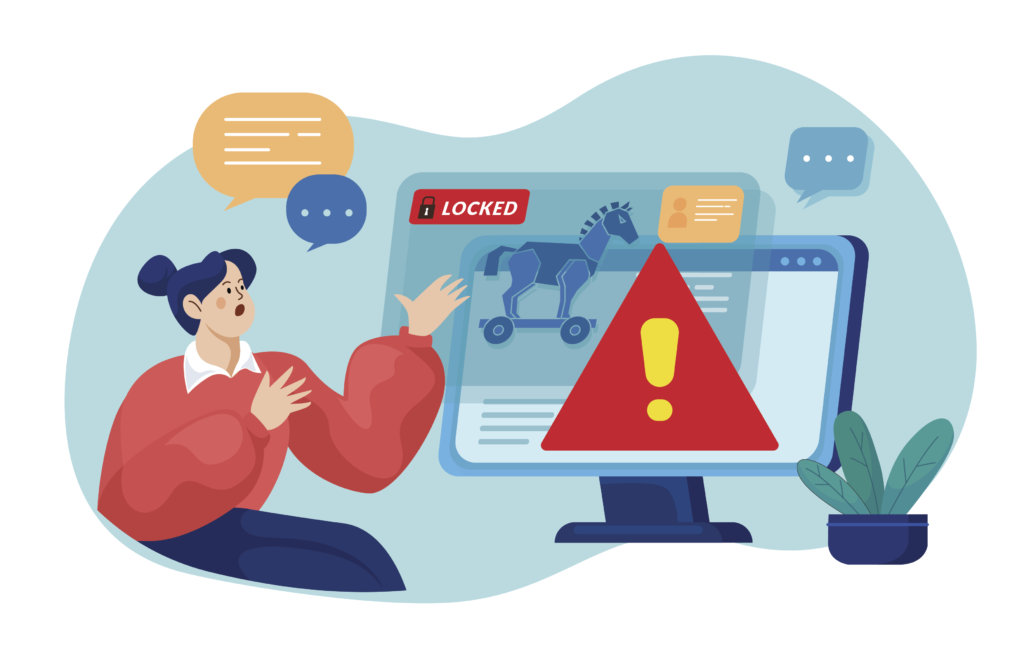A Business Guide on What to Do When You Think Your Network Has Been Breached
Ever get the feeling that things just aren’t right with your computer or your network? Maybe your systems are running slow, you’re getting strange pop-ups, your passwords aren’t working, settings are acting up, or you can no longer access all your files? These symptoms could indicate a network breach. Discovering the breach is half the battle – but what are you supposed to do next?
Step 1: Alert Your IT Staff or Company
The sooner you notify your IT team, the quicker they can protect the rest of your company’s network. They may isolate your system, use advanced tools to minimize damage, or restore your data from a pre-breach backup. Time is of the essence in containing a breach.
Step 2: Change All Passwords
Update all your passwords immediately. Ensure that you use completely new passwords, not variations of old ones, and avoid using the same password across multiple systems. This prevents the hacker from easily accessing other accounts. If possible, do this from a computer you know is secure.
Step 3: Implement Two-Factor Authentication
Implement two-factor authentication (2FA) on as many systems that you use as possible. This adds an extra layer of security by requiring two forms of identification before access is granted. Even if a hacker has your password, they won’t be able to access your account without the second form of verification, such as an authenticator app or code sent to your phone . Keep in mind that if your account is compromised, your email most likely is as well, so 2FA to your email is not recommended.
Step 4: Watch Other Accounts Closely for Ongoing Impact
A breach in one account can often lead to breaches in others. Keep a close eye on your other accounts for any unusual activity. Quick detection can prevent further damage.
Step 5: De-Authorize Connected Apps
Remove permissions for any apps connected to your compromised accounts. Isolating these accounts reduces the risk of further exploitation and minimizes collateral damage.
Step 6: Monitor Your Financial Accounts
Hackers often target financial data. Closely monitor your bank accounts and credit cards for unauthorized transactions. Consider placing a flag on your accounts for major transactions until your IT team confirms that your network is secure.
Step 7: Alert Appropriate Contacts
If you suspect that the hacker has access to your email, customer data, or social media, inform your colleagues, clients and vendors. Transparency is key to managing the situation and maintaining trust.
Step 8: Run a Virus/Malware Scan
Your IT company or internal staff will need to perform a comprehensive scan for viruses and malware to identify and neutralize threats. If the threat seems severe enough, reach out to see if your vendor or managed service provider offers an incident response service which will monitor, detect, and respond to security incidents that occur in the future.
Step 9: Identify Where Your Sensitive Data Has Gone
Data breaches can expose sensitive information. Use a Dark Web scanner to check if your data has been leaked or sold. This helps you understand the scope of the breach and take appropriate actions.
Step 10: Review & Reinforce
Once you have identified what the issue was and how it happened, make sure to review with your employees. Conduct training to help prevent future breaches. Implement quarterly all-staff training sessions and provide individual training for those who need extra help. If an employee repeatedly falls for phishing attacks, they should receive intensive training to improve their awareness and skills.
Conclusion
Realizing you’ve been hacked is one of the most painful, violating experiences you can have with technology. The sense of invasion and loss of control can be overwhelming, leaving you feeling vulnerable and uncertain about the safety of your data. Today, it’s happening more often than ever before, with cybercriminals becoming increasingly more sophisticated. Businesses of all sizes and sectors, particularly small to medium-sized enterprises and educational institutions, are prime targets due to often having less robust security measures in place.
Utilize this Business Guide on What to Do if You Think You’ve Been Hacked to take immediate action. We’ve even provided the 10-Steps in a downloadable PDF for your handy reference.
Looking for an IT Partner to help navigate the intricacies of your cybersecurity? Spera Partners can help. Whether you suspect a hack or have just been putting off a much-needed evaluation of your security plan, contact us for a complimentary consultation. Don’t wait until it’s too late – secure your network today.
For Businesses: https://sperapartners.com/business-solution-complimentary-consultation/
For Schools: https://sperapartners.com/Complimentary-Consultation/
Or book a meeting with our President, Brian Hess here.
Spera Partners
For more information on our cybersecurity solutions, visit: https://sperapartners.com/cybersecurity/














